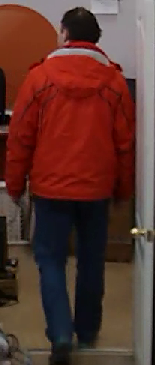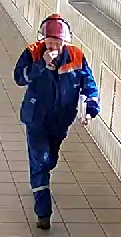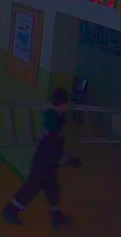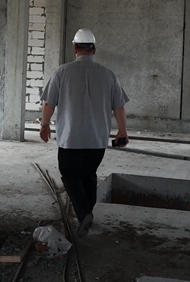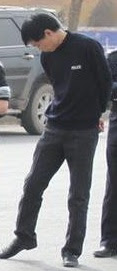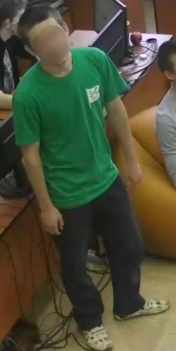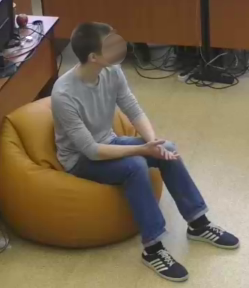Requirements and recommendations for the Uniform Detection module🔗
Important
If multiple video analytics modules are used on a single camera, it should be installed and configured to meet the requirements of all modules.
For example, module A and module B are used on the camera with the following requirements:
Module A: Camera tilt angle to the plane is at least 10°; resolution is at least 1024×768; frame rate is at least 20 frames per second.
Module B: Camera tilt angle to the plane is no more than 20°; resolution is no less than 1920×1080; frame rate is no less than 6 frames per second.
In this case, the camera must be installed and configured in order to comply with the following conditions:
Camera tilt angle to the plane is from 10° to 20°; resolution is at least 1920×1080; frame rate is at least 20 frames per second.
Hardware and software🔗
Warning
Before using the neural network capabilities of the module, it is necessary to install the neural networks package.
Important
When upgrading Eocortex to another version, it is necessary to also upgrade the neural networks package to the corresponding version.
The following is required for the Advanced (with GPU) mode:
A processor that supports AVX instructions.
An NVIDIA video card (GPU) with a compute capability index (CUDA GPU Compute Capability) of at least 6.1 and with at least 4 GB of memory; the parameters and performance of the video card must be no lower than that of NVIDIA 10 series video cards. The video card driver version for Windows OS must be at least 572.61, and for Linux OS, at least 570.124.06.
Swap file at least half of the total RAM size.
Hint
If the package will be installed on a virtual machine, it may additionally be required to:
Enable support for AVX instructions in the guest machine settings.
Use GRID drivers for GPU virtualization.
Warning
When using a video card, the stable operation of the module is guaranteed on operating systems Windows 10, Windows Server 2016, Ubuntu 20.04, as well as on the newer versions of these operating systems.
On other operating systems (Windows versions 7 and 8, Windows Server versions 2008 and 2012, Debian), issues may arise when trying to use NVIDIA graphics cards. On Windows 8, this is due to the cessation of support for NVIDIA graphics card drivers. On Debian, the problem is due to the high complexity of installing workable versions of video card drivers.
Video stream🔗
For the modes using neural networks:
Frame frequency: no lower than 3 frames per second;
Image resolution: no lower than HD (1280x720). Increasing the resolution will not detect more objects or smaller objects.
Tip
Increasing the resolution above HD will not lead to detecting smaller objects or a greater number of objects compared to HD.
Frame aspect ratio 16:9.
Warning
The accuracy of object recognition may be reduced if the frame aspect ratio is different.
Image🔗
Lighting in the frame should be uniform and constant.
If the camera is installed in front of a bright light source (the sun behind an entrance door, etc.), it is required to adjust the exposure (or brightness) to ensure that the objects in the frame have a natural color (not overexposed or darkened). In this case, it is permissible for the background to be overexposed.
The image must be in color.
Image quality should be at least average. There should be no significant compression artifacts.
White balance must be adjusted correctly.
The exposure and contrast must be adjusted on the camera in such a way that the color of the uniform could be unambiguously recognized by the human eye.
People must not be overexposed.
Scene and camera position🔗
People to be detected must be positioned vertically in the frame.
In the Simplified (without GPU) mode, the people to be detected must be visible full-length, not overlapped by other objects.
In Advanced (with GPU), people may be partially overlapped: the body can be hidden from bottom to top, but not above the waist. However, it may reduce the accuracy of the module.
Strong lateral illumination (e.g., sunlight from a window) is unacceptable as it will overexpose parts of clothing.
A scene that is too dark is unacceptable, since in this case the color of the clothes will always be close to black.
When detecting respirators, glasses and face shields, the angle between the camera and the direction of the face must not exceed 60°.
It is permitted to place the camera overhead. In this case, the angle of inclination of the camera in relation to the horizontal must not exceed 35°.
Objects must be fully visible in the frame.
The camera must be fixed securely, do not allow the camera to jiggle or wobble.
Warning
Do not use the Uniform Detection module on PTZ cameras.
Detection🔗
Clothing of set color🔗
Uniform detection refers to the detection of clothing of a specified color on a person's upper body.
It is advisable to use one-color uniform.
Clothing color detection ensures around 90% accuracy on bright colors and around 75% accuracy on dark colors. The accuracy drops when attempting to detect dark and gray colors. For example, dark blue uniform may appear dark green as well. Clothes in gray shades can also be confused with other shades. Issues can be caused by non-single-colored clothes: the color of such clothes is not always distinguishable and when detecting most often tends to dark shade.
Hard hat🔗
When detecting hard hats, it is required that the person's head is always above their shoulders in a normal position with minimal inclination.
Detection of hard hats in the following colors is supported:
White
Yellow
Orange
Red
Blue
Green
Safety vest🔗
Safety vest is defined as a sleeveless clothing of any color worn over the torso when detecting uniform.
Respirator🔗
Respirator must be worn correctly: it should cover the lower part of the face or the entire face. Medical masks do not qualify as respirators.
Glasses🔗
Glasses must be at eye level. Glasses must not be worn on the forehead. Only glasses with colored frames or fully colored glasses are detected.
Face shield🔗
Face shields are detected correctly only if they cover the face.
Hearing protection🔗
Headphones (hearing protection) must be worn over the head and cover the ears.
Gloves and mittens🔗
When detecting gloves and mittens, there should be no foreign objects in the person's hands.
The hand on which the glove is worn shouldn't be in the pocket.
The presence of gloves/mittens is determined if one hand or both hands are visible in the frame. If both hands are visible in the frame, but one of them is without a glove, this condition will be recognized as absence of gloves.
Polyethylene gloves are not acceptable.
For successful detection of gloves/mittens, the person must be in the frame for at least 10 seconds. The hands must be visible.
Note
When detecting glasses and face shields, the face must be directed toward the camera. Detection may not work properly when viewed from the side.
Note
Respirator, glasses and face shield are not detected if the person's face is not visible in the frame. In this case, the presence or absence of this uniform on a person is not detected.
Examples of detection🔗
The following are examples of uniform and personal protective equipment detection.

|

|

|

|

|

|
Object size🔗
For successful detection of people, their height in the frame must be at least 80 pixels. In addition, they must occupy at least 2% of the width and 8% of the height of the frame.
To detect the following personal protective equipment, the size of the head in the frame must be at least 60 pixels in width and height:
Respirator
Glasses
Face shield
Hearing protection
When detecting gloves and mittens, the size of the hand in the frame must be at least 40 pixels in width and height.
For safety vest detection, the size of the safety vest in the frame must be at least 60 pixels in width and height.
Warning
The above requirements for object sizes as a percentage of frame size are the minimum necessary to ensure the best recognition quality under optimal conditions. If the relative sizes of objects are reduced from the required values, the module's performance for such objects will decrease.
Examples🔗
Below are examples of angles and people's appearances to detect uniform and personal protective equipment.
Correct |
Incorrect |
|---|---|
|
|
|
|
|
|
|
|
|
|
